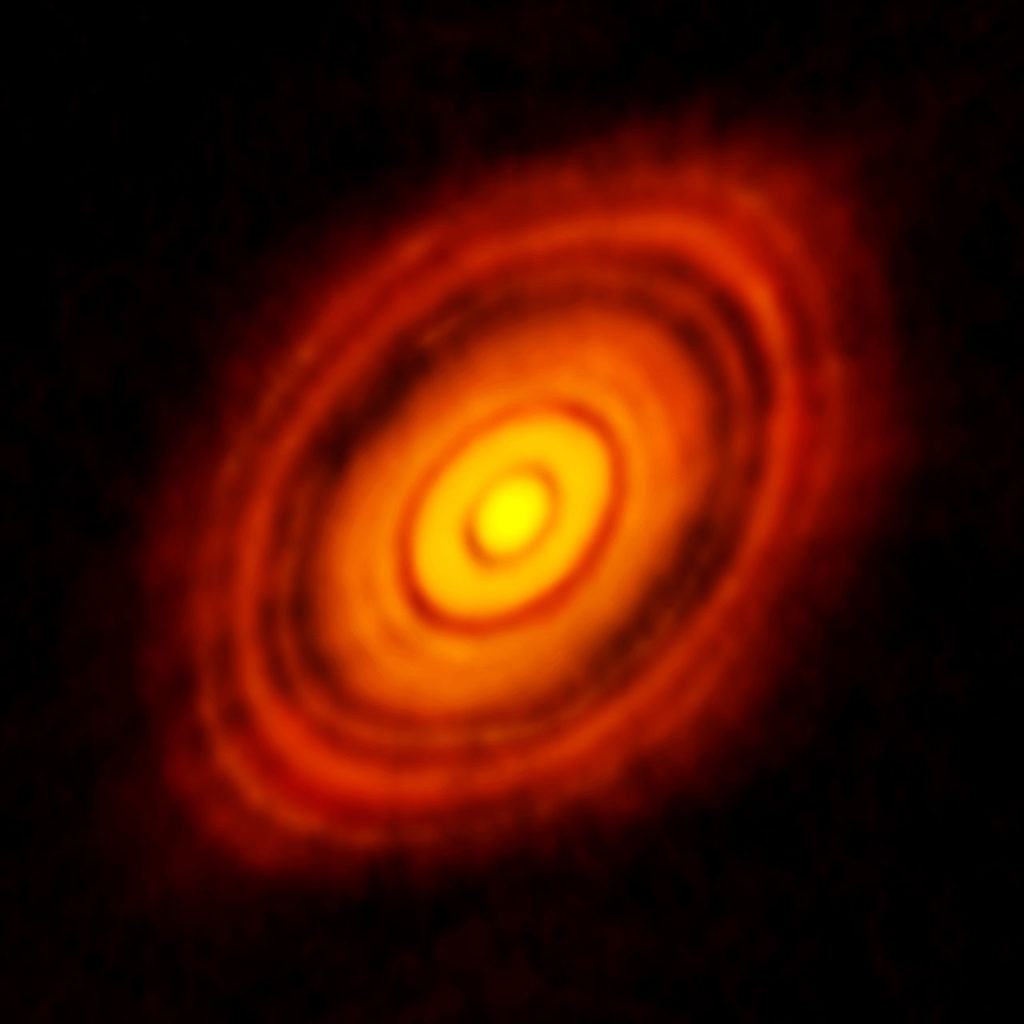Two reports have been in the news recently about planets observed to orbit “young” T Tauri stars having masses of about one solar mass. In both cases the results are not accounted for by standard theories, and yet are easily explained by subquantum kinetics.
1. The first report describes the puzzling findings from observations carried out in Chile by ALMA (Atacama Large Millimeter/submillimeter Array): https://www.quantamagazine.org/planets-found-to-be-larger-than-the-disks-they-come-from-20181004/. This concerns the discovery that planets have formed around young star systems that current theory claims are less than one million years old. This is puzzling because the time available for the planets to grow to their observed size far exceeds its star’s lifetime. Also the masses estimated for the planets far exceed the amount of dust that surrounds the star and which is assumed to be forming them. For example, most of the planet masses are estimated to range from 30 earth masses to 0.5 jupiter masses while the dust around the star is estimated to be about 2 earth masses. Both of these difficulties invalidate the currently accepted dust/gas condensation theory of planet formation.
Both of these difficulties, however, disappear when considered within the subquantum kinetics paradigm. According to subquantum kinetics, stars grow in mass and size because matter is being continuously created within them. While some of their mass gain would be due to dust accreting on their surfaces, most of their matter would be created internally.
While conventional theory holds that T Tauri stars are young, 100,000 to 1 million years old, subquantum kinetics instead holds that T Tauri stars are of medium age, hence several billion years old, similar to the Sun. They are simply Sun-like stars that have become engulfed by a cloud of dust and gas. The presence of this gas explains why they have unusually high luminosities, infrared excesses, elevated flaring activity, and excessive cosmic radiation. So from the standpoint of subquantum kinetics, it is quite expected to find planets around these stars.
Here is the technical paper: https://arxiv.org/pdf/1810.06044.pdf
2. Another study conducted of CI Tauri, a 0.9 solar mass T Tauri star found four planets ranging in size from about the mass of Saturn up to 10 Jupiter masses. See story here: https://phys.org/news/2018-10-giant-planets-young-star.html. One of the outer two planets orbits at 100 AU from its parent star. This causes major problems to explain its formation since not enough dust is found at such a great distance from the star. So current accretion models have difficulty explaining how it formed in just 2 million years, the age assumed for the parent star. Again, these results are understandable in the context of subquantum kinetics which allows matter to form spontaneously within the planet and which regards dust enshrouded T Tauri stars such as CI Tauri to have ages on the order of billions of years or more rather than 100,000 to a few million years.
Here is the technical paper: https://iopscience.iop.org/article/10.3847/2041-8213/aae36b/meta

While I believe you’re on the right track with SQK, I’m not sure that it tells the full story of what is wrong with the standard theory. The main problem with ST is that it supposes a large thing (star) coming into being before the small thing (planet). In a universe rich with metals (in the astronomical sense), it must follow there are very many planets (and planetoids) to every star, and most of them are free objects, not orbiting stars. Except for the oldest stars that really did “grow” their planets themselves, in most cases planets in orbit around a star are likely captured, and perhaps grown additionally since the capture. In the Solar System, it seems that the moons and possibly the smallest planets like Mercury and Pluto etc. are ancient captured “kernels” that did not grow, while the larger planets may have a more variated history. We could speculate and theorize – but the central point that smaller things grow before larger ones is obvious.